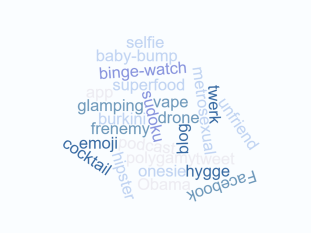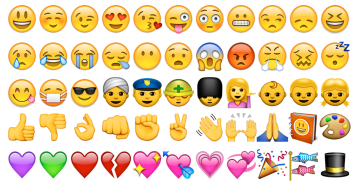It’s the time of the year when dictionaries announce their Word of the Year. After reading a few articles about the winning words, I decided to incorporate them into a lesson. Actually, it was my experimental practice lesson for the Delta, which I based on the Demand High approach (no further mention will be made of Demand High in this post – that deserves a post of its own).
This lesson suits an adult class of intermediate level or above. It turned out that the words chosen all had Greek roots, so it was easier for my class of Greek speakers than I had anticipated. The first half is rather pessimistic (due to the words of the year and their associated topics) but the second half is more uplifting. Check the content as you may not wish to discuss some of the topics in certain contexts.
This was a one hour lesson but could easily have been a two hour class since the students had so many questions about the new words. They were also keen to discuss and reflect on 2016, so I’d recommend spending longer than an hour if you can.
Here’s a brief lesson plan, and the Powerpoint I used is at the bottom of the post.
Stage 1. (Slide 1)
Ask students to speculate on what “word of the year” means
Stage 2. (Slide 2)
Show a paragraph about word of the year with some missing words (first letter shown). Students work in pairs to discover the missing words.
Whole class feedback, eliciting answers and elaborating on why answers are correct (checking form) and writing answers on board.
Stage 3. (Slide 3 – optional)
Learners discuss what they think the word(s) of the year might be in small groups. I showed a Wordle image to provoke ideas – this wasn’t as successful as I had hoped as some learners got bogged down in trying to understand all the new words. If you do use it, stress that the word(s) of the year may not be in there.

Stage 4. (Slides 4-7)
Words of the year shown to learners with three possible definitions, one correct. Students work in pairs to decide on the correct definition and part of speech.
Stage 5. (Slide 8)
Learners discuss why these three words were chosen, and how they were chosen.
Stage 6. (Slides 9 -15)
Learners are shown a list of previous words of the year. They are then shown some pictures which they have to match to the words, with some elicitation from the teacher. Write the words on the board and elicit what part of speech they are.


Stage 6. (Go back to Slide 9)
Students choose one of the words (preferably one that is new to them) and check its meaning using Google Images and Cambridge Learner’s Dictionary. You can demonstrate this to the whole class. (Be aware that some of the new words are not in the learner’s dictionary so Google Images is a good alternative).
Students create their own gap fill sentences which they stick on the whiteboard.
Stage 7.
Students read the other sentences on the board and write their suggested answer using a whiteboard pen.
Stage 8.
Teacher tells students her personal word of the year (mine was change) and asks students to choose one word to summarise 2016. Students share their word. My class were equally split between positive and negative words.
Great description of the lesson Katy , I observed this lesson last year in Athens and it was marvelous. Although the lesson was to some what higher in demand than the learner’s level , they enjoyed it and expressed that they wanted more lessons from this kind next times . Good Luck!
LikeLiked by 1 person